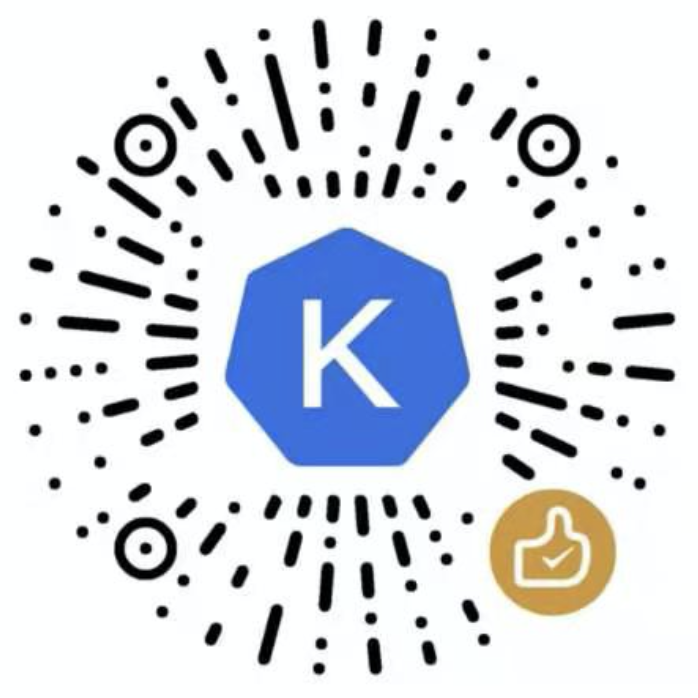# RBAC 授权接口
Role-based access control (RBAC)基于角色的访问控制,是Kubernetes中支持的一种授权方式。使用 rbac.authorization.k8s.io API 来驱动授权决策,允许管理员通过该 API 动态配置授权策略。自 Kubernetes 1.8 起,RBAC 模式已稳定可用,且通过 rbac.authorization.k8s.io/v1 API 提供支持。如果要激活 RBAC,在启动 API Server 时必须使用参数 --authorization-mode=RBAC
译者注:
使用 kubeadm 安装 kubernetes 后,启动 API Server 的参数有
--authorization-mode=Node,RBAC,同时激活了 Node Authorization (opens new window) 和 RBAC Authorization。因此,如果您参考 kuboard.cn 提供的文档安装 kubernetes,默认是启用 RBAC 授权的。
RBAC API 声明了四种顶级(top-level)Kubernetes 对象类型,管理员可以使用 kubectl、API接口调用等方式操作这四种类型的对象。在阅读本系列 RBAC 文档时,您可以使用 kubectl apply -f (resource).yaml 直接执行并尝试其效果。
# Role和ClusterRole
在 RBAC API 中,角色包含了一组授权规则。此处的授权规则是纯粹的“授予”规则(没有“否定”规则)。角色可以用以下两种形式定义:
- 名称空间中的
Role - 集群范围内的
ClusterRole
Role 只能用来授权访问单个名称空间内部的资源。下面的例子中定义的 Role 授权读取 default 名称空间中的 Pod:
apiVersion: rbac.authorization.k8s.io/v1
kind: Role
metadata:
namespace: default
name: pod-reader
rules:
- apiGroups: [""] # "" indicates the core API group
resources: ["pods"]
verbs: ["get", "watch", "list"]
2
3
4
5
6
7
8
9
ClusterRole 可以用来授予与 Role 相同的权限,但是由于 ClusterRole 是集群范围内的,也可以用来授权访问如下资源:
- 集群范围内的资源(例如节点)
- 非资源性质的端口(例如 "/healthz")
- 所有名称空间内的资源(例如 Pod,授权后可以使用这类语句
kubectl get pods --all-namespaces)
下面的 ClusterRole 可以授权读取任意特定名称空间的 secrets,或所有名称空间的 secrets(取决于如何 绑定):
apiVersion: rbac.authorization.k8s.io/v1
kind: ClusterRole
metadata:
# "namespace" omitted since ClusterRoles are not namespaced
name: secret-reader
rules:
- apiGroups: [""]
resources: ["secrets"]
verbs: ["get", "watch", "list"]
2
3
4
5
6
7
8
9
# RoleBinding和ClusterRoleBinding
角色绑定将角色中定义的权限授予给一个用户或者一组用户。角色绑定包含了一个被授权对象的列表(user、group、service account),以及一个被授予的角色的引用。角色绑定有如下两种定义方式:
- 名称空间内的
RoleBinding - 集群范围内的
ClusterRoleBinding
RoleBinding 可以引用同名称空间下的 Role。下面的 RoleBinding 将 “default” 名称空间中的角色 “pod-reader” 授予给用户 “jane”,此时 “jane” 可以读取 “default” 名称空间中的 pod。
roleRef:引用被授予的角色kind可以是Role或者ClusterRolename是被引用的Role或者ClusterRole的名称
此例中的 RoleBinding 使用 roleRef 将用户 “jane” 绑定到上面创建的 pod-reader 这个 Role
apiVersion: rbac.authorization.k8s.io/v1
# This role binding allows "jane" to read pods in the "default" namespace.
kind: RoleBinding
metadata:
name: read-pods
namespace: default
subjects:
- kind: User
name: jane # Name is case sensitive
apiGroup: rbac.authorization.k8s.io
roleRef:
kind: Role #this must be Role or ClusterRole
name: pod-reader # this must match the name of the Role or ClusterRole you wish to bind to
apiGroup: rbac.authorization.k8s.io
2
3
4
5
6
7
8
9
10
11
12
13
14
RoleBinding 也可以引用一个 ClusterRole,用来授予 RoleBinding 所在名称空间中的对象的访问权限。这样,管理员可以在集群内定义一组通用的角色,并且在不同的名称空间中重用这些角色。
例如,尽管下面的 RoleBinding 引用了 ClusterRole,“dave”(被授权的用户,大小写敏感)将只能够读取 “development” 名称空间(RoleBinding所在的名称空间)中的 secrets 对象。
apiVersion: rbac.authorization.k8s.io/v1
# This role binding allows "dave" to read secrets in the "development" namespace.
kind: RoleBinding
metadata:
name: read-secrets
namespace: development # This only grants permissions within the "development" namespace.
subjects:
- kind: User
name: dave # Name is case sensitive
apiGroup: rbac.authorization.k8s.io
roleRef:
kind: ClusterRole
name: secret-reader
apiGroup: rbac.authorization.k8s.io
2
3
4
5
6
7
8
9
10
11
12
13
14
ClusterRoleBinding 可以被用来授权访问集群级别的资源,以及所有名称空间中的资源。下面的 ClusterRoleBinding 允许 “manager” 用户组中的用户读取任何名称空间中的 secrets:
apiVersion: rbac.authorization.k8s.io/v1
# This cluster role binding allows anyone in the "manager" group to read secrets in any namespace.
kind: ClusterRoleBinding
metadata:
name: read-secrets-global
subjects:
- kind: Group
name: manager # Name is case sensitive
apiGroup: rbac.authorization.k8s.io
roleRef:
kind: ClusterRole
name: secret-reader
apiGroup: rbac.authorization.k8s.io
2
3
4
5
6
7
8
9
10
11
12
13
RoleBinding、ClusterRoleBinding 创建后,其 roleRef 字段不可修改,如果尝试修改则会报错。如果需要修改 roleRef 字段,必须将 RoleBinding 或 ClusterRoleBinding 删除后重新创建。这样做的主要原因有如下两点:
roleRef不同的话,本质上是完全不同的绑定关系。要求删除并重建RoleBinding或ClusterRoleBinding以修改roleRef字段,可以确保列表中的被授权的对象(用户、用户组、Service Account)都是经过考虑的(如果直接修改roleRef字段,用户将不会核对列表中的用户、用户组、Service Account是否应该被授予新的角色)- 不允许修改
roleRef字段的情况下,可以将修改RoleBinding、ClusterRoleBinding的权限授予给某个用户,使其可以管理其中的被授权对象列表(用户、用户组、Service Account),但是不能够修改对应的角色(权限)。
kubectl auth reconcile 命令行工具可以创建或更新包含 RBAC 对象的描述文件,删除、重新创建 RoleBinding、ClusterRoleBinding。更多信息请参考 command usage and examples
# Referring to Resources
大多数的资源都以其名称作为标识,例如 “pods”,与其 API 的 URL 路径中的标识相同。某些 Kubernetes API 也包含了 “subresource 子资源”,例如 pod 的 logs。其 API 的 URL 如下所示:
GET /api/v1/namespaces/{namespace}/pods/{name}/log
此时, “pods” 是名称空间中的资源,“log” 是 pod 的子资源。在 RBAC 的 role 中,通过 / 来分隔资源和子资源。例如,下面的 yaml 可以授权读取 pod 和 pod 的 log:
apiVersion: rbac.authorization.k8s.io/v1
kind: Role
metadata:
namespace: default
name: pod-and-pod-logs-reader
rules:
- apiGroups: [""]
resources: ["pods", "pods/log"]
verbs: ["get", "list"]
2
3
4
5
6
7
8
9
对于某些请求,也可以使用 resourceNames 列表来引用其实例。此时,可以限定被访问的单个对象实例
。例如,下面的 yaml 可以授权对单个 configmap 进行 “get” 和 “update” 操作:
apiVersion: rbac.authorization.k8s.io/v1
kind: Role
metadata:
namespace: default
name: configmap-updater
rules:
- apiGroups: [""]
resources: ["configmaps"]
resourceNames: ["my-configmap"]
verbs: ["update", "get"]
2
3
4
5
6
7
8
9
10
- “create” 操作不能通过 resourceName 来限定,因为该对象的名字在授权的时候还不存在
- “deletecollection” 操作也不能通过 resourceName 来限定
# Aggregated ClusterRoles
KUbernetes 1.9 开始,可以使用 aggregationRule 来将 ClusterRole 与其他的 ClusterRole 合并。Aggregated ClusterRole 的权限由控制器管理,是所有与其 label selector 匹配的 ClusterRole 中所定义权限的并集。下面是一个 aggregated ClusterRole 的例子:
apiVersion: rbac.authorization.k8s.io/v1
kind: ClusterRole
metadata:
name: monitoring
aggregationRule:
clusterRoleSelectors:
- matchLabels:
rbac.example.com/aggregate-to-monitoring: "true"
rules: [] # Rules are automatically filled in by the controller manager.
2
3
4
5
6
7
8
9
创建一个与 aggregated ClusterRole 的 label selector 匹配的 ClusterRole 时,将会向该 aggregated ClusterRole 添加规则。在上面的例子中,可以向通过创建另外一个包含标签 rbac.example.com/aggregate-to-monitoring: true 的 ClusterRole 向名称为 “monitoring” 的 ClusterRole 添加规则:
apiVersion: rbac.authorization.k8s.io/v1
kind: ClusterRole
metadata:
name: monitoring-endpoints
labels:
rbac.example.com/aggregate-to-monitoring: "true"
# These rules will be added to the "monitoring" role.
rules:
- apiGroups: [""]
resources: ["services", "endpoints", "pods"]
verbs: ["get", "list", "watch"]
2
3
4
5
6
7
8
9
10
11
默认的面向用户的角色是 aggregated ClusterRole。这样,管理员就可以为默认角色添加 custom resource 的规则,例如 CustomResourceDefinition。
例如,下面的 ClusterRole 允许 “admin” 和 “edit” 这两个默认角色管理 custom resource “CronTabs”,而 “view” 角色则只能读取这些资源。
apiVersion: rbac.authorization.k8s.io/v1
kind: ClusterRole
metadata:
name: aggregate-cron-tabs-edit
labels:
# Add these permissions to the "admin" and "edit" default roles.
rbac.authorization.k8s.io/aggregate-to-admin: "true"
rbac.authorization.k8s.io/aggregate-to-edit: "true"
rules:
- apiGroups: ["stable.example.com"]
resources: ["crontabs"]
verbs: ["get", "list", "watch", "create", "update", "patch", "delete"]
---
kind: ClusterRole
apiVersion: rbac.authorization.k8s.io/v1
metadata:
name: aggregate-cron-tabs-view
labels:
# Add these permissions to the "view" default role.
rbac.authorization.k8s.io/aggregate-to-view: "true"
rules:
- apiGroups: ["stable.example.com"]
resources: ["crontabs"]
verbs: ["get", "list", "watch"]
2
3
4
5
6
7
8
9
10
11
12
13
14
15
16
17
18
19
20
21
22
23
24
# Role Examples
例子中只展示了
rules这一部分。
允许读取 core API Group (opens new window) 中的 “pods”:
rules:
- apiGroups: [""]
resources: ["pods"]
verbs: ["get", "list", "watch"]
2
3
4
允许 读取/写入 “extensions” 和 “apps” API Group 中的 “deployments”:
rules:
- apiGroups: ["extensions", "apps"]
resources: ["deployments"]
verbs: ["get", "list", "watch", "create", "update", "patch", "delete"]
2
3
4
允许读取 “pods”、读取/写入 “jobs”:
rules:
- apiGroups: [""]
resources: ["pods"]
verbs: ["get", "list", "watch"]
- apiGroups: ["batch", "extensions"]
resources: ["jobs"]
verbs: ["get", "list", "watch", "create", "update", "patch", "delete"]
2
3
4
5
6
7
允许读取名为 “my-config” 的 ConfigMap(必须绑定到某个名称空间中的 RoleBinding):
rules:
- apiGroups: [""]
resources: ["configmaps"]
resourceNames: ["my-config"]
verbs: ["get"]
2
3
4
5
允许读取 core API Group 中的 “nodes” (由于节点时集群级别的对象,此规则必须定义在 ClusterRole 中,也不惜绑定到一个 ClusterRoleBinding):
rules:
- apiGroups: [""]
resources: ["nodes"]
verbs: ["get", "list", "watch"]
2
3
4
允许对非资源型的端口 “/healthz”(及其所有子路径)执行 “GET” 和 “POST” 请求(此规则必须定义在 ClusterRole 中,也不惜绑定到一个 ClusterRoleBinding):
rules:
- nonResourceURLs: ["/healthz", "/healthz/*"] # '*' in a nonResourceURL is a suffix glob match
verbs: ["get", "post"]
2
3
# Referring to Subjects
RoleBinding、ClusterRoleBinding 将角色绑定到被授权主体。被授权主体可以是 group、user、service account。
User 通过 string 来标识,可以是普通的 username,例如 “alice”,email风格的名称,例如“bob@example.com”,或者以字符数形式定义的数字ID。由集群管理员通过配置 authentication modules (opens new window) 来决定产生何种格式的 username,RBAC 授权系统对此做限定。但是,system: 前缀是被 Kubernetes 系统预留的,管理员应该确保 username 不包含这一前缀。
KUbernetes 中的 Group 信息由 Authenticator 模块提供。与 user 一样,group 也使用 string 来标识,system: 前缀也是被预留的,但是没有格式要求。
Service Account (opens new window) 使用 system:serviceaccount: 前缀的 username,并且属于 system:serviceaccounts: 前缀的 group。
# Role Binding Examples
下面的例子中只显示了 RoleBinding、ClusterRoleBinding 的 subjects 部分。
绑定 user “alice@example.com”:
subjects:
- kind: User
name: "alice@example.com"
apiGroup: rbac.authorization.k8s.io
2
3
4
绑定 group “frontend-admins”:
subjects:
- kind: Group
name: "frontend-admins"
apiGroup: rbac.authorization.k8s.io
2
3
4
绑定 kube-system 名称空间中的 default service account:
subjects:
- kind: ServiceAccount
name: default
namespace: kube-system
2
3
4
绑定 qa 名称空间中的所有 service account:
subjects:
- kind: Group
name: system:serviceaccounts:qa
apiGroup: rbac.authorization.k8s.io
2
3
4
绑定任意 service account:
subjects:
- kind: Group
name: system:serviceaccounts
apiGroup: rbac.authorization.k8s.io
2
3
4
绑定所有已认证的用户(kubernetes 1.5+):
subjects:
- kind: Group
name: system:authenticated
apiGroup: rbac.authorization.k8s.io
2
3
4
绑定所有未认证用户(kubernetes 1.5+):
subjects:
- kind: Group
name: system:unauthenticated
apiGroup: rbac.authorization.k8s.io
2
3
4
绑定所有用户(kubernetes 1.5+):
subjects:
- kind: Group
name: system:authenticated
apiGroup: rbac.authorization.k8s.io
- kind: Group
name: system:unauthenticated
apiGroup: rbac.authorization.k8s.io
2
3
4
5
6
7
微信群

赞赏


